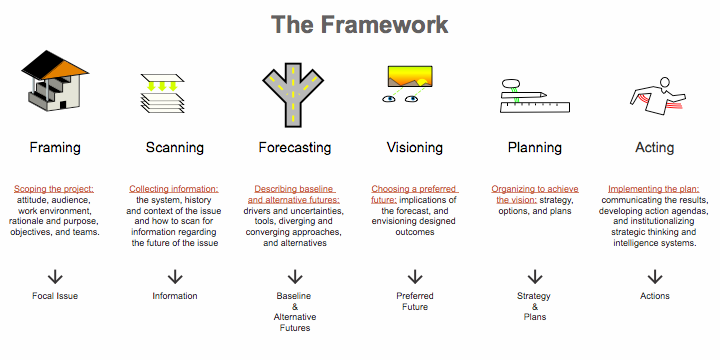In our Teaching about the Future book, we noted that our curriculum is roughly organized into Understanding, Mapping, and Influencing the Future, and organized the book along those categories. It’s not only useful to organizing a curriculum, but it’s a useful way to approach to what you need to know as a student, prospective or practicing futurist.
- Understanding is about grasping conceptual backdrop to thinking about the future. Key concepts such as understanding change, alternative futures, and the cone of plausibility, and theoretical underpinnings such as systems thinking, theories of social change, and integral futures
- Mapping describes how to construct forecasts of potential future outcomes or alternative futures, drawing on framing and scanning. We also refer to this as describing inbound change–the change that happens to people. It comes at us from the “outside” world. Our Framework Forecast process produces baseline and alternative futures, but there are a whole host of ways to produce forecasts and scenarios. Mapping covers the first three activities of the Framework graphic below.
- Influencing, explores how to take action to shape the future. We often refer to this as outbound change — the change that people bring about and effect on the world. It answers the “so what” question — once the future has been mapped, then what? Our response is that we study the future in order to influence it–to help create a better future. Influencing covers the first second three activities of the Framework graphic below.
Next, where is the value-add of futures in understanding, mapping, and influencing the future? Andy Hines

Leave a Reply